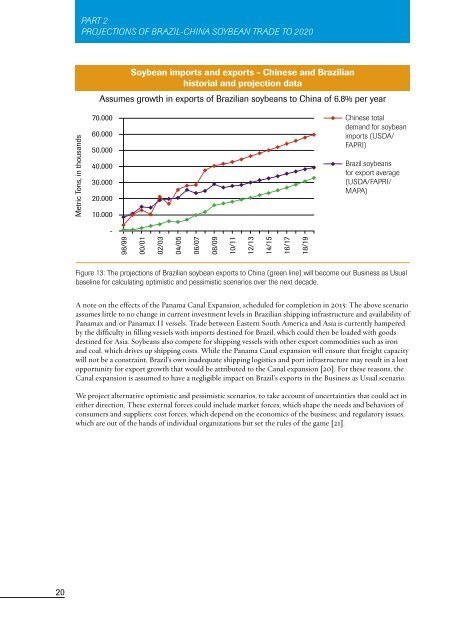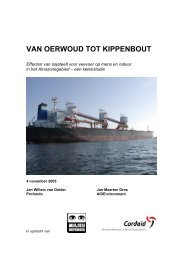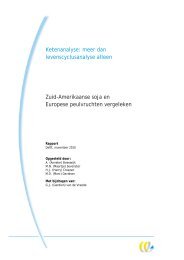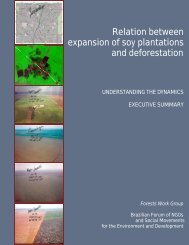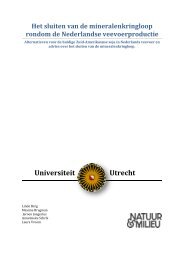Brazil-China Soybean Trade - The Nature Conservancy
Brazil-China Soybean Trade - The Nature Conservancy
Brazil-China Soybean Trade - The Nature Conservancy
Create successful ePaper yourself
Turn your PDF publications into a flip-book with our unique Google optimized e-Paper software.
PART 2PROJECTIONS OF BRAZIL-CHINA SOYBEAN TRADE TO 2020PART 2PROJECTIONS OF BRAZIL-CHINA SOYBEAN TRADE TO 2020Metric Tons, in thousands<strong>Soybean</strong> imports and exports - Chinese and <strong>Brazil</strong>ianhistorial and projection dataAssumes growth in exports of <strong>Brazil</strong>ian soybeans to <strong>China</strong> of 6.8% per year70.00060.00050.00040.00030.00020.00010.000-98/9900/0102/0304/0506/0708/0910/11A note on the effects of the Panama Canal Expansion, scheduled for completion in 2015: <strong>The</strong> above scenarioassumes little to no change in current investment levels in <strong>Brazil</strong>ian shipping infrastructure and availability ofPanamax and/or Panamax II vessels. <strong>Trade</strong> between Eastern South America and Asia is currently hamperedby the difficulty in filling vessels with imports destined for <strong>Brazil</strong>, which could then be loaded with goodsdestined for Asia. <strong>Soybean</strong>s also compete for shipping vessels with other export commodities such as ironand coal, which drives up shipping costs. While the Panama Canal expansion will ensure that freight capacitywill not be a constraint, <strong>Brazil</strong>’s own inadequate shipping logistics and port infrastructure may result in a lostopportunity for export growth that would be attributed to the Canal expansion [20]. For these reasons, theCanal expansion is assumed to have a negligible impact on <strong>Brazil</strong>’s exports in the Business as Usual scenario.We project alternative optimistic and pessimistic scenarios, to take account of uncertainties that could act ineither direction. <strong>The</strong>se external forces could include market forces, which shape the needs and behaviors ofconsumers and suppliers; cost forces, which depend on the economics of the business; and regulatory issues,which are out of the hands of individual organizations but set the rules of the game [21].12/1314/1516/1718/19Chinese totaldemand for soybeanimports (USDA/FAPRI)<strong>Brazil</strong> soybeansfor export average(USDA/FAPRI/MAPA)Figure 13: <strong>The</strong> projections of <strong>Brazil</strong>ian soybean exports to <strong>China</strong> (green line) will become our Business as Usualbaseline for calculating optimistic and pessimistic scenarios over the next decade.2. Better Than Business as UsualOver the next decade, many scenarios and unknown variables could cause <strong>Brazil</strong>ian soybean exports to<strong>China</strong> to be better than the Business as Usual projections outlined above. <strong>The</strong>re a number of possible waysthis could happen. Products such as foams, paints, and products similar to plastic are already made fromsoybeans. Technological innovation could result in a popular new product derived from soybeans that iseasily produced in <strong>China</strong>. <strong>China</strong> could increase its stockpiling efforts to ensure food security and protectagainst price fluctuations [22]. In the ‘Food versus Fuel’ debate, food could win out, causing countries toreduce their biofuel mandates and dramatically reduce both <strong>Brazil</strong>’s domestic demand and world demandfor soybean oil and biodiesel, thus making more soybeans available for the export market. Another unlikelybut potential scenario is that <strong>China</strong> could repeal the one child law, thereby increasing the country’s overalldemand for food.All these “optimistic” scenarios would result in an increase in total Chinese demand for soybeans, and allexporting countries would see an increase in their exports, within their production and shipping capacities.In the case of <strong>Brazil</strong> we assume that total soybean export capacity remains constant, due to the unavailabilityof additional shipping vessels and no anticipated transportation infrastructure improvements, as highlightedin the note on the Panama Canal expansion. To illustrate this, we increase both the Chinese import demandprojections by 5%, and accordingly increase the corresponding <strong>Brazil</strong> exports to <strong>China</strong> by 5% over theBusiness as Usual projection, as shown in figure 14. <strong>The</strong> results show <strong>Brazil</strong> exporting 83% of its availablesoybeans to <strong>China</strong> by the end of the projection period.Metric Tons, in thousandsOptmistic Scenario: Projected Chinese total soybean demandincreased 5% and projected <strong>Brazil</strong> soybean exports to <strong>China</strong> increased 5%70.00060.00050.00040.00030.00020.00010.000-96/9797/9898/9999/0000/0101/0202/0303/0404/0505/0606/0707/0808/0909/1010/1111/1212/1313/1414/1515/1616/1717/1818/1919/20Optimistic Chinesetotal demand forsoybean imports(USDA/FPRI/MAPA)<strong>Brazil</strong> soybeansfor export Average(USDA/FAPRI/MAPA)Optimistic <strong>Brazil</strong>soybean exports to<strong>China</strong> (MAPA/FAO+ 5%)Figure 14Another optimistic scenario illustrates an increased demand specifically for <strong>Brazil</strong>ian soybeans, and the resultdemonstrates a similar growth in <strong>Brazil</strong> exports to <strong>China</strong>. Such a scenario could occur if, for example, there isa technological innovation in ethanol production that makes corn the most attractive crop in the US, causingmany American farmers to switch from soybeans to corn and reducing US net exports. In this case, Chinesedemand for soybeans does not increase, but they would depend more on their sources in South America.In such a situation, assuming that <strong>Brazil</strong> maintains its total soybean export level but supplies all of <strong>China</strong>’sincreased demand, <strong>Brazil</strong>ian exports to <strong>China</strong> grow at an average of 7.6% per year, and <strong>China</strong> becomes thedestination for 90% of <strong>Brazil</strong>’s soybean exports by the end of the projection period (see figure 15).20 21


